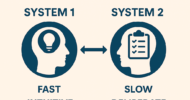One of the biggest topics today in the health care field is that of meaningful use. Meaningful use is defined as using certified electronic health record (EHR) technology to improve quality, safety, efficiency, and reduce health disparities. The promise is that meaningful use will help improve patient and provider communication and increase care coordination while maintaining the privacy and confidentiality of patients.
However, serious questions are emerging about whether this is actually occurring with the implementation of a variety of new policies and procedures. In my own practice as a psychologist, instances routinely occur where meaningful use policies are decreasing efficiency and staff/patient communication, not improving it.
One example of many includes patients (or their parents) being able to cancel appointments electronically without the front office staff being notified of this occurring. Staff is told to routinely “scan” charts for canceled or rescheduled appointments, and then contact the patient if this has occurred (to reschedule) instead of the patient being required to contact our office. Patients/parents can also send notes at any time through the “portal” for providers, which do not necessarily alert the provider of the sent message given assignments to specific and general staff “buckets.” In situations where staff are ill/on leave, pulled to a different department, or are swamped with other responsibilities, these strained processes are quick to break down.
But beyond the purely practical issues, there are psychological factors at play that likely speak to increased stress, burnout, and turnover that many are experiencing. The first issue is that we, the staff and providers, are increasingly being disjointed by all the options available. Previously in our office the only place a staff member had to monitor for potential cancellations was the phone lines; now suddenly, there are multiple circuits that they are responsible for checking, which increases the already fragmented nature of the position. Previously when patients wanted to send a message, it could only occur in person, by phone, or by fax (or mailed letter); now, the electronic avenues being utilized (or explored) are growing exponentially in addition the traditional ones that exist. It seems wonderful for patients to be able to communicate through whichever way they desire. That is, until the communication becomes so scattered and decentralized that it repeatedly breaks down.
A second principle of concern is what I will call the “psychological distance X amount of information received” ratio. Basically described, the further removed a communication gets from a direct, face-to-face interaction, the more contacts that are likely to be made. Effort also interacts with this principle, as the more effort a message takes, the less likely it will occur. Take a simple illustration. Most patients do not show up at your office to convey a message. A few might send a letter. Some will call. But open the lines of electronic access, whether they be through a portal, email, text or otherwise, and what you will find is that your messages will only start increasing. Thoughts/worries that patients may have not felt were significant enough issues to justify a phone call or face-to-face meeting will now much more likely be transmitted. If you question me about this, just look at what we see in all other forums where electronic transmission is being offered. Suddenly, everyone seems to have something to say. Whereas people may have previously communicated a message to their friends through a few phone calls, now hundreds of texts might be sent.
I want my patients to be able to communicate with me effectively, for their health and my quality of practice. But there is no way I can sustain my professional and personal life the way I should if the messages only increase from what already exist. Meanwhile, as EHR is supposedly creating a more efficient circumstance for all providers, we are finding that internal medicine residents are spending an average of five hours per day on electronic charts. Is this really patient-centered, person-centered practice and learning done more efficiently?
I appreciate many of the advantages that technology has provided at work and home. But as EHR and other systems further develop, it seems that technology is guiding people instead of people guiding technology. Simply because a capacity exists does not mean it is best practice, or should be employed at all. Simply because we are a consumerist health care industry does not mean that patients should be afforded every means possible to dictate how they communicate their health care needs. Sometimes, even the tedious act of calling an office to communicate a message or reschedule an appointment is way more important than we think, and more efficient than we realize. I am not saying this just as a licensed psychologist. I am saying this as a married father of six young children. Because when we get to the heart of the matter, I am first and foremost responsible for the people I pledge to love, care for and work with. Technology may just have to wait.
Jim Schroeder is a pediatric psychologist.
Image credit: Shutterstock.com


























![Rethinking patient payments: Why billing is the new frontline of patient care [PODCAST]](https://kevinmd.com/wp-content/uploads/Design-3-190x100.jpg)





![Empowering IBD patients: tools for managing symptoms between doctor visits [PODCAST]](https://kevinmd.com/wp-content/uploads/Design-2-190x100.jpg)

